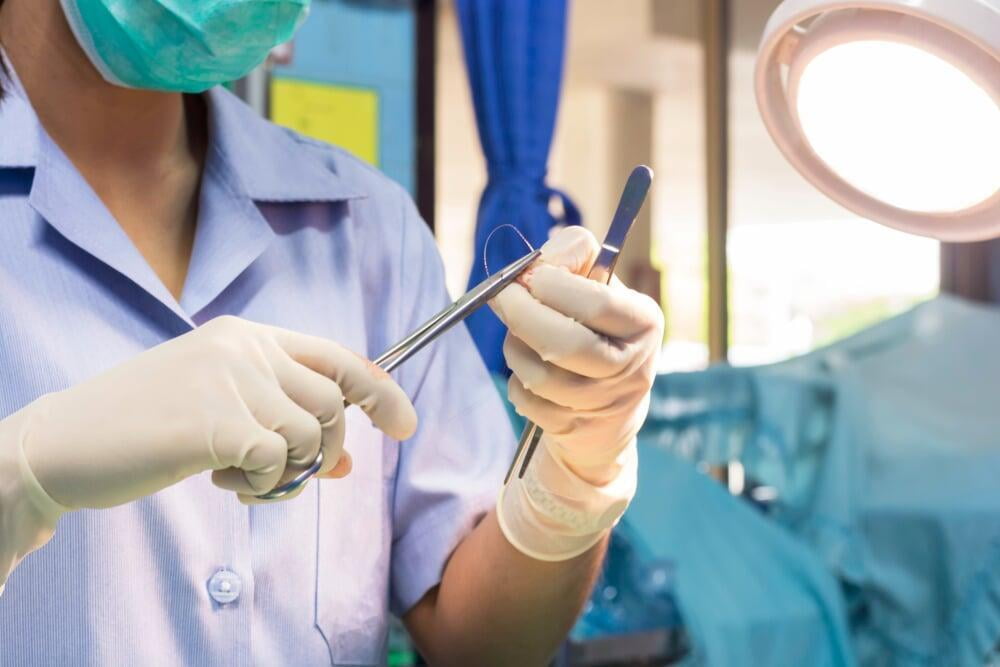A laceration is a wound caused by the tearing or cutting of soft body tissue, often resulting in irregular or jagged edges. These injuries are frequently caused by sharp objects such as metal, glass, or even animal bites and can carry a risk of bacterial contamination.
At QuickMD Care, we provide prompt and professional laceration repair services at our clinics in Frisco and McKinney, helping you prevent infection and support proper healing.

Laceration Repair Preparation
How to Treat your Personal Cut at home?
Until you see the doctor, tips to treat the laceration repair:
We will vaccinate you with tetanus if:
Scarring
Scars cure any lacerations. The degree of scarring is variable and depends on:
Comprehensive Laceration Repair Services at Quick MD Care in Frisco and McKinney
At Quick MD Care, we understand the urgency and precision required for effective skin laceration treatment. Whether it’s a minor cut or a deep wound, our dedicated team is here to provide the highest quality care. Our specialized centers in Frisco and McKinney are equipped with advanced medical technology and staffed by experienced professionals who ensure the best outcomes for all laceration treatments.
Skin Laceration Treatment in Frisco
When you need skin laceration treatment in Frisco, Quick MD Care is your go-to provider. Our skin laceration center in Mckinney offers comprehensive services for treating various types of lacerations. We understand that timely and proper treatment is crucial for preventing infections and ensuring proper healing. Our team at the skin laceration treatment center in Frisco is highly skilled in handling everything from minor cuts to more severe injuries.
At our skin laceration treatment clinic in Frisco, we provide a comfortable and safe environment where patients receive the best care. Our laceration repair center in Frisco is designed to cater to the needs of patients of all ages, ensuring that everyone receives the necessary attention and treatment. The laceration sutures treatment center in Frisco is equipped with the latest medical equipment, ensuring that every procedure is carried out with precision and care.
For those seeking specialized care, the laceration repair clinic in Frisco at Quick MD Care offers advanced treatment options. Whether it’s suturing, wound cleaning, or follow-up care, our laceration sutures treatment clinic in Frisco ensures that all patients receive comprehensive care tailored to their specific needs. Our goal is to provide quick and effective treatment to promote faster healing and minimize scarring.
Skin Laceration Treatment in McKinney
In McKinney, Quick MD Care offers top-notch skin laceration treatment to address all types of skin injuries. Our skin laceration center in McKinney is dedicated to providing timely and efficient care for patients with lacerations. At our skin laceration treatment center in McKinney, we understand the importance of immediate treatment to prevent complications and ensure optimal healing.
The skin laceration treatment clinic in McKinney at Quick MD Care is staffed by experienced professionals who are committed to providing the highest quality care. Our laceration repair center in McKinney is equipped with state-of-the-art facilities to handle various laceration treatments. From initial assessment to final follow-up, our team ensures that each patient receives personalized care tailored to their specific injury.
Our laceration sutures treatment center in McKinney offers specialized services for more complex lacerations that require precise suturing techniques. The laceration repair clinic in McKinney at Quick MD Care provides a comprehensive range of services to ensure proper wound closure and healing. Our laceration sutures treatment clinic in McKinney is dedicated to minimizing pain and promoting faster recovery for all patients.
Why Choose Quick MD Care for Laceration Treatment?
Choosing Quick MD Care for your laceration treatment needs in Frisco and McKinney means opting for excellence in medical care. Our skin laceration treatment centers in Frisco and McKinney are designed to provide a seamless patient experience, from initial consultation to complete recovery. Our highly skilled team of medical professionals ensures that every patient receives personalized care and attention.
At our skin laceration centers in Frisco and McKinney, we prioritize patient safety and comfort. Our state-of-the-art facilities and advanced medical equipment enable us to deliver the best possible care for all types of lacerations. Whether it’s a minor cut or a complex wound, our laceration repair centers in Frisco and McKinney are equipped to handle it with precision and care.
Our laceration sutures treatment centers in Frisco and McKinney offer specialized care for patients who require suturing. Our experienced team is trained in the latest suturing techniques, ensuring that wounds are closed properly to promote optimal healing. At our laceration repair clinics in Frisco and McKinney, we take a comprehensive approach to treatment, ensuring that all aspects of the injury are addressed.
Conclusion
Quick MD Care is your trusted partner for skin laceration treatment in Frisco and McKinney. Our skin laceration treatment centers in Frisco and McKinney are dedicated to providing the highest quality care for all types of lacerations. From minor cuts to complex wounds, our laceration repair centers in Frisco and McKinney are equipped to handle all your treatment needs.
For specialized care, our laceration sutures treatment centers in Frisco and McKinney offer advanced treatment options to ensure proper wound closure and healing. Trust Quick MD Care for comprehensive and compassionate care for all your skin laceration treatment needs. Contact us today to schedule an appointment and experience the difference our expert care can make in your recovery process.
We also offer the following services as part of our Urgent CareServices: Laceration Repair / Sutures, Splints – Falls Treatment, Broken Bone, Work Related Injuries, IV Antibiotic.
We also offer the following services as part of our primary care: Adult Yearly Physical Examinations, Adult Wellness Guidelines, Immigration Physicals, Employment Drug Testing, Department of Transportation (DOT) Testing.
We also offer the following services as part of our Pediatric Services: Well Child Care, School Physicals, Childhood And Adult Vaccinations, Free Prenatal Visits
© 2021 QuickMDCare. All Rights Reserved. Build with 🧡 by PPCROY